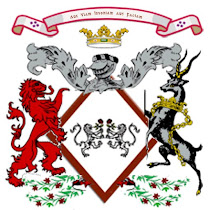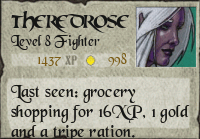
(OOC)
Memorial Day
As a child growing up in the 1970s I can still recall hearing my parents and grandparents refer to this particular holiday as Decoration Day. And decorate is just what we did, too. The memories of World War II and Korea were still fresh, and we were in the midst of Vietnam.
Uncles had served in these wars and thankfully all had come home. Many friends and extended family members had not. So every Memorial Day, the family would take flowers to several cemeteries to decorate the graves of soldiers we knew and also the graves of other relatives. It was a special time; remembering those who had effected our lives in many ways. Laughing as my grandparents would tell the stories to us, we learned more and more about our family history.
After the rounds of the graves were made, we would then all (some 25 of us) return to my mother's parents' home, which was beautifully situated against a mountain with a creek flowing past it, for the holiday picnic. The grills were manned by my uncles. Grandma and the ladies would finish up the potato salads and other vegetables while Grandpa and the older cousins would play with we smaller ones. Hide and seek. Tree climbing. Skipping rocks on the creek.
After the lazy picnic, the family then would often play volleyball or croquet. Many would retire to the porch swing and chairs. This is when more stories would be told. It was in settings such as this that I learned my family's history - the stories of what life was like for my uncles in World War II as well as what it was like for my grandparents and mother as they sat around their radio listening to reports from Europe and the Pacific theatres of war. Grandma sometimes would pull well worn letters from her keepsake box to read to us. My uncles would often have to leave the porch when these were read. I do not know whether this was because of embarrassment (not wanting to hear their own words read) or because they really did not wish to recall in detail those times in their lives.
For me these memories stand out as happy times in my life. I have clear pictures of the springtime days in my mind. I see the dogwood trees and rhododendron in full bloom, the fresh green grass and I feel the warm breeze blowing on my young body. I sense the love and camaraderie felt as we placed the bouquets of flowers in the urns on the graves.
While there are many these days who, it seems, have forgotten why this holiday was created, I would suggest that there are also many of us, who have not. And as I think about the wars and conflicts that have happened since my childhood, I am ever more grateful for the men and women who so bravely placed themselves in harms way to protect the lives of Americans and many others around the world. Paying the ultimate price to protect our freedom.
With Sincere Thanks!
****
A few words on the history:
The History of Memorial Day
Although many towns and villages in the North claim to be the birthplace of Memorial Day, the actual genesis appears to come from the women of the Confederacy who decorated the graves of their fallen husbands, sons, fathers and brothers. A Civil War hymn, published in 1867, is named "Kneel Where Our Loves are Sleeping" by Nella L. Sweet... its dedication simply reads..."To The Ladies of the South who are Decorating the Graves of the Confederate Dead".
Waterloo, NY claims to be the birthplace, and although officially declared so by President Lyndon B. Johnson in 1966, it would seem that no one may truly lay claim to the tradition of remembering the War Dead by decorating their graves... from all accounts, it was a practice that sprung up in many, many individual towns both in the North and the South.
It doesn't matter who was first... what matters is that almost immediately the tradition was being practiced throughout the land and within short order it would become official. It is appropriate perhaps that the earliest accounts place the tradition in the loving and empty arms of the women left behind after the battle had ended.
Decoration Day - May 5th 1868
National Commander of the Grand Army of the Republic, General John A. Logan, was so struck by the practice of decorating the graves of th war dead, that he penned an eloquent order for the Union Army. It read -
General Order No. 11
Headquarters, Grand Army of the Republic Washington, D.C.,
May 5, 1868Decoration Day
I. The 30th day of May, 1868, is designated for the purpose of strewing with flowers or otherwise decorating the graves of comrades who died in defense of their country during the late rebellion, and whose bodies now lie in almost every city, village, and hamlet churchyard in the land. In this observance no form or ceremony is prescribed, but posts and comrades will in their own way arrange such fitting services and testimonials of respect as circumstances may permit.
We are organized, comrades, as our regulations tell us, for the purpose, among other things, "of preserving and strengthening those kind and fraternal feelings which have bound together the soldiers, sailors, and marines who united to suppress the late rebellion." What can aid more to assure this result than by cherishing tenderly the memory of our heroic dead, who made their breasts a barricade between our country and its foe? Their soldier lives were the reveille of freedom to a race in chains, and their death a tattoo of rebellious tyranny in arms. We should guard their graves with sacred vigilance. All that the consecrated wealth and taste of the Nation can add to their adornment and security is but a fitting tribute to the memory of her slain defenders. Let no wanton foot tread rudely on such hallowed grounds. Let pleasant paths invite the coming and going of reverent visitors and found mourners. Let no vandalism of avarice or neglect, no ravages of time, testify to the present or to the coming generations that we have forgotten, as a people, the cost of free and undivided republic.
If other eyes grow dull and other hands slack, and other hearts cold in the solemn trust, ours shall keep it well as long as the light and warmth of life remain in us.
Let us, then, at the time appointed, gather around their sacred remains and garland the passionless mounds above them with choicest flowers of springtime; let us raise above them the dear old flag they saved from dishonor; let us in this solemn presence renew our pledges to aid and assist those whom they have left among us as sacred charges upon the Nation's gratitude,--the soldier's and sailor's widow and orphan.
II. It is the purpose of the Commander-in-Chief to inaugurate this observance with the hope it will be kept up from year to year, while a survivor of the war remains to honor the memory of his departed comrades. He earnestly desires the public press to call attention to this Order, and lend its friendly aid in bringing it to the notice of comrades in all parts of the country in time for simultaneous compliance therewith.
III. Department commanders will use every effort to make this order effective.
By command of:
JOHN A. LOGAN,
Commander-in-Chief.N. P. CHIPMAN,
Adjutant-General





1 comments:
A lovely and thoughtful post, Lady Eva. Virtually every generation of my RL family (since we landed on these shores) has seen service to the state, and a few made careers of it, my father and brother among them. I am very grateful for your post-- it encapsulates my feelings entirely.
Yrs,
H. O'T.
Post a Comment